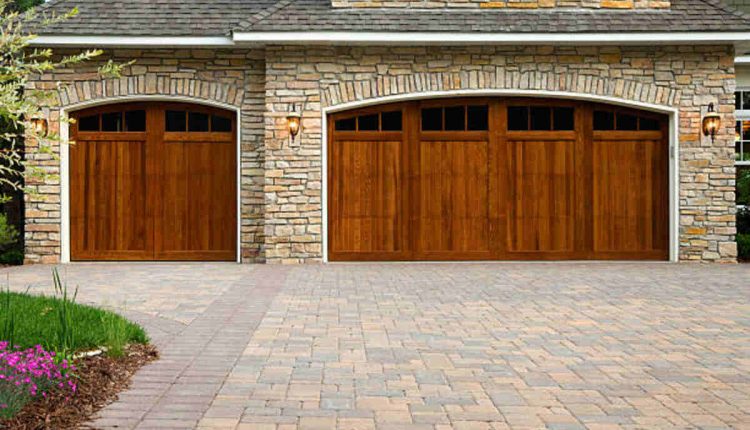Several factors must be considered when constructing or renovating a commercial parking lot, including the material used, climate conditions, maintenance needs, and costs. Select the best Huntington Beach Asphalt Paving.
Asphalt and concrete paving materials are popular choices; however, other options exist that offer specific advantages in certain environments – these include porous asphalt and gravel paving materials.
Cost
Costs associated with commercial parking lot paving vary based on material selection, project scope, and contractor. A good paving company should offer an estimate before beginning work; additional expenses such as paint or equipment rentals, traffic control fees, inspections, waste removal services, and warranty concerns could also be considered costs associated with commercial paving projects.
Paving a parking lot may be costly upfront, but its returns pay dividends over time. Paved lots outlive gravel or dirt lots and require less day-to-day maintenance. Additionally, well-kept lots can help your business present itself positively, while poorly-kept lots can leave customers with a negative impression that could even lead to lawsuits against it.
Asphalt and concrete are both widely used materials for parking lot surfaces, both composed of sand and stone aggregate, but differ significantly in how they’re held together: asphalt uses petroleum crude oil or tar as its binding agent, while concrete typically employs cement.
Asphalt is more eco-friendly than concrete in terms of emissions, energy use, and hydrocarbon production. But for even greener companies seeking alternative options to asphalt paving systems, permeable pavers have become an increasingly popular alternative. These pavers allow rainwater to flow to sewer systems, thus reducing runoff pollution and runoff runoff.
Durability
When building a commercial parking lot, the material chosen can have a direct effect on its lifespan. Various factors influence this, most notably traffic load. Heavy vehicles tend to put more stress on surfaces than passenger cars, which accelerates wear and tear. Furthermore, climate can play an influential role—extreme temperatures, freeze/thaw cycles, and rainfall can all cause asphalt pavement to crack more frequently.
Consider what kind of weather your commercial parking lot will experience before selecting its materials. Concrete stands up well against extreme heat exposure while remaining cold-resistant – all while handling more vehicle traffic with ease than asphalt can do – yet installation and repair costs tend to be higher for the former material.
Resurfacing frequency can have an enormous impact on the durability of commercial parking lots. To protect it from pothole formation and other forms of damage, parking lots that receive frequent use should be resurfaced every three years for optimal conditions. Resurfacing can either involve tearing out existing pavement and installing fresh asphalt surfacing materials or milling down and then resurfacing over the existing surface. An asphalt expert can assist with selecting which option would work best for your business.
Aesthetics
An impressive commercial parking lot can play a crucial role in a company’s image and customer satisfaction. A well-maintained lot is an indicator that shows customers and employees alike that you care for them and your property, saving on repair and replacement costs in the long run as well as improving the safety and functionality of its parking lot.
When designing commercial parking lots, architects must consider the needs and environment in addition to aesthetic considerations. Aspects to consider include how people will use the lot and whether it meets accessibility standards. A retail parking lot must be easily navigable by people using wheelchairs or having mobility issues.
Pavement materials should also be considered. Concrete and asphalt are the two primary options available to us today, though other choices, such as permeable pavers, may provide less expensive solutions that complement the aesthetics of our building complex.
An attractive commercial parking lot should feature clearly marked stalls and an overall clean appearance, along with landscaping featuring trees and plants for customers to enjoy. Furthermore, landscaping will create an inviting atmosphere while simultaneously helping reduce noise pollution levels; plus, it protects vehicles against theft or vandalism and prevents theft/vandalism from occurring on its premises. Fences made of different materials—wood, brick, or metal—can also provide added security to a parking lot.
Maintenance
A professionally maintained paved lot sends a strong signal about any business: it shows clients and customers that it is professional, well-established, and dedicated to keeping its facilities in top shape; additionally, it increases property value while improving curb appeal.
Although maintenance requirements for asphalt parking lots may differ, here are a few general guidelines you should follow to keep the pavement looking its best for as long as possible. Regular cleaning, inspections, and timely repairs for potholes or minor damages will help your parking lot last longer.
Proper drainage provisions are vital to maintaining a long-lasting commercial parking lot. Asphalt must be designed to drain quickly to prevent excess moisture from seeping in, which accelerates its degradation and increases maintenance costs down the line. By including surface and subsurface drainage features when building, surface/subsurface drainage costs may be substantially reduced over time.
Asphalt commercial parking lots should be seal-coated every couple of years to maintain resilience and reduce damage from freeze-thaw cycles. A few types of sealcoating materials, including coal tar and asphalt emulsion, offer different degrees of effectiveness. Seal coating is best performed during summer temperatures when working with this material is more accessible.
